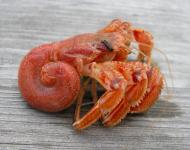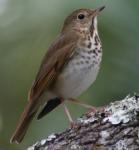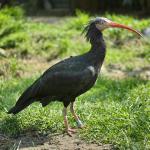According to scientists, solitary animals are those animals which — with the exception of the evolutionary necessities of feeding and reproduction, including migratory habits — do not live in groups. A significant number of animals are , in fact, solitary. Among mammals are big cats and bears — pet owners of cats will notice their characteristic “indifference” as a remnant solitary behavior. Such solitary behavior presumably originated from territorial necessity, given that the roaming pattern for feeding required a large habitat per individual, but the behavior lingered even when such a necessity was not in play.
A second category of solitary animal is so defined because the animal eludes human and other animal observation, hiding, as it were, from potential predators but, in effect, from everyone. These may seem to elude humans, such as reptiles, when it is just a matter of observation. Others, like the famous hermit thrush, simply blends into their environment well or, like owls, are nocturnal. We call them solitary by default, which makes a significant portion of the world’s animals solitary, or as far as human observation is concerned.
At least three reclusive creatures have been dubbed “hermits”for their solitary behavior or for their penchant for concealment: 1) the hermit crab, 2) the hermit thrush, and 3) the hermit ibis. Other animals could have earned the hermit sobriquet, but a little humor shows why these three have earned the title, at least to this observer.

|

|

|
1. The lowly hermit crab is the digambara of the solitary animals, sky-clad and entirely vulnerable. This crustacean is without shell and takes a covering as it finds it, typically from deceased crustaceans, the garb ill-fitting and object of human derision. Scientists have identified rare accumulations of hermit crabs (analogous to the vast Kumbh Mela festival of India held every 12 years, attracting sadhus and holy pilgrims) wherein the crabs shed their garb and find larger, more suitable garb from their brothers.
2. The hermit thrush delights listeners of its “somewhat melancholy” song, which emanates from deep hidden forests. Scientists have recently confirmed (“Proceedings of the National Academy of Sciences (US),” Nov. 2014) that the hermit thrush approximates the mathematical structures of human music. Science News reported that
In its somewhat melancholy songs, North America’s Catharus guttatus thrushes mix in strings of short, non-wavering tones. In 54 out of 71 thrush songs, two statistical methods showed those tones related to each other much as notes in human musical scales do, researchers report November 3 in the Proceedings of the National Academy of Sciences. The hermit thrushes “have a strong preference for the same simple ratios [such as 3:2] that humans seem to like,†says paper coauthor Tecumseh Fitch of the University of Vienna.
When recordings of the hermit thrush song are slowed down, the sound is distinctly like that of a flute, so the next question is whether the sound approximates the Japanese shakuhachi, the Indian Carnatic flute, or Mozart. Our preference, especially with the description of “melancholic,” is for the first. Not pursued by distinguished panel was whether humans somehow inherited this capacity from birds as part of evolution or if they imitated the hermit thrush, which is not familiar with Pythagorean mathematical principles. Also to be determined is whether all this singing (bird or human) is simply to attract a mate, much like human behavior in adolescent rock bands, interminably outliving both their youth and reproductive needs.
3. The hermit ibis is also called, less diplomatically, the northern bald ibis, though it winters in southern Africa and flies north along East Africa to Turkey (or, more romantically, East Asia, Anatolia, etc.) The hermit ibis looks like a vulture, and thus lives up to the hermit characteristic of wandering, feeding indiscriminately, and retaining a certain ugliness by worldly standards. (The hermit thrush wisely conceals its good looks to retain its hermit identity.) Like the early desert hermits, the hermit ibis lives in rocky arid places, and achieved a religious respectability with report that it guided Muslim pilgrims to Mecca during the Hajj. Indeed, a 16th-cetury Austrian bishop declared the hermit ibis a protected species, but the species died out in Europe (not unlike thriving eremitism) around the same time. Today, the hermit ibis continues to haunt arid places from Syria to Morocco, indifferent to the conflicts of human populations, their religions, and their disdain for hermits.